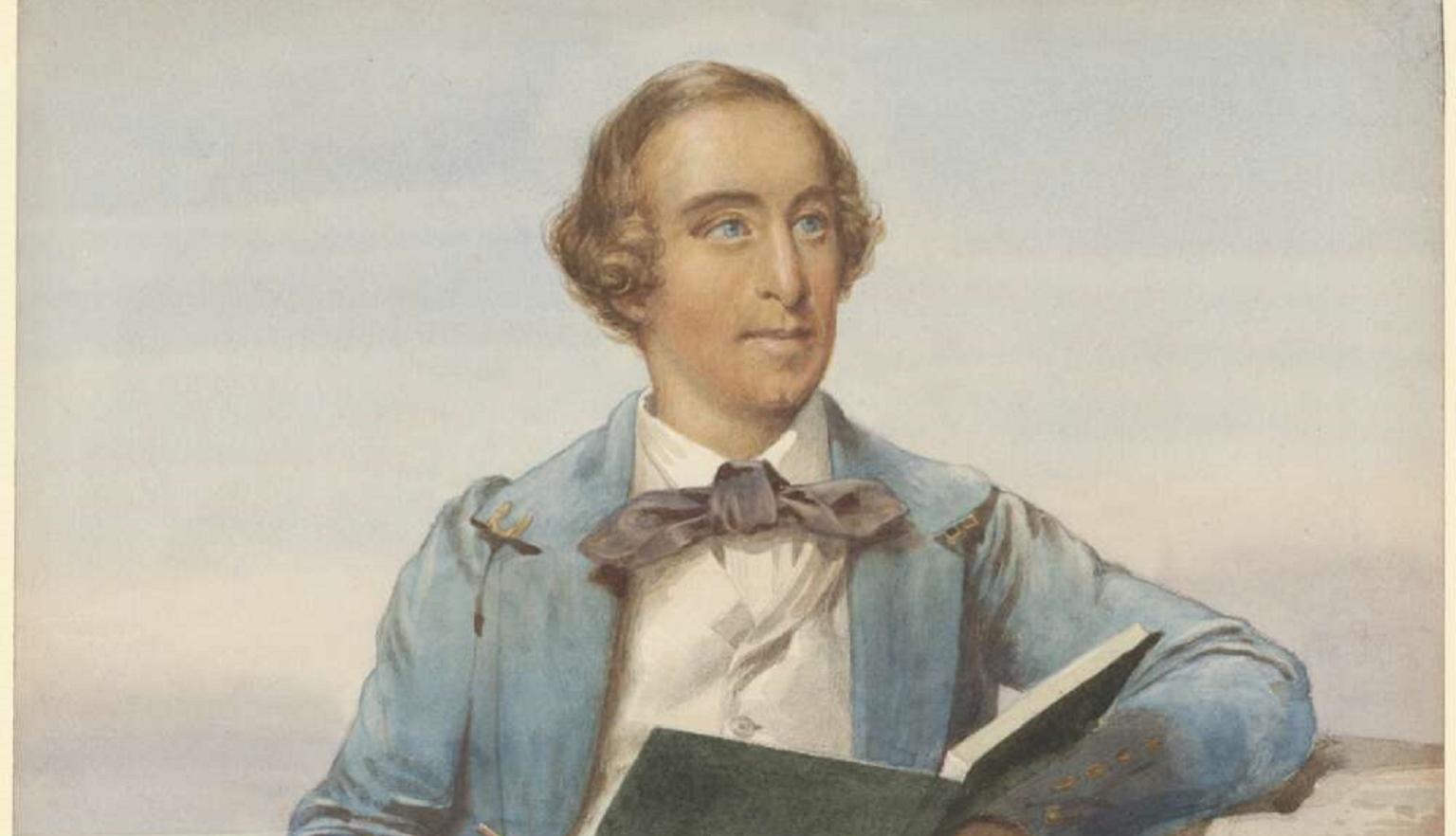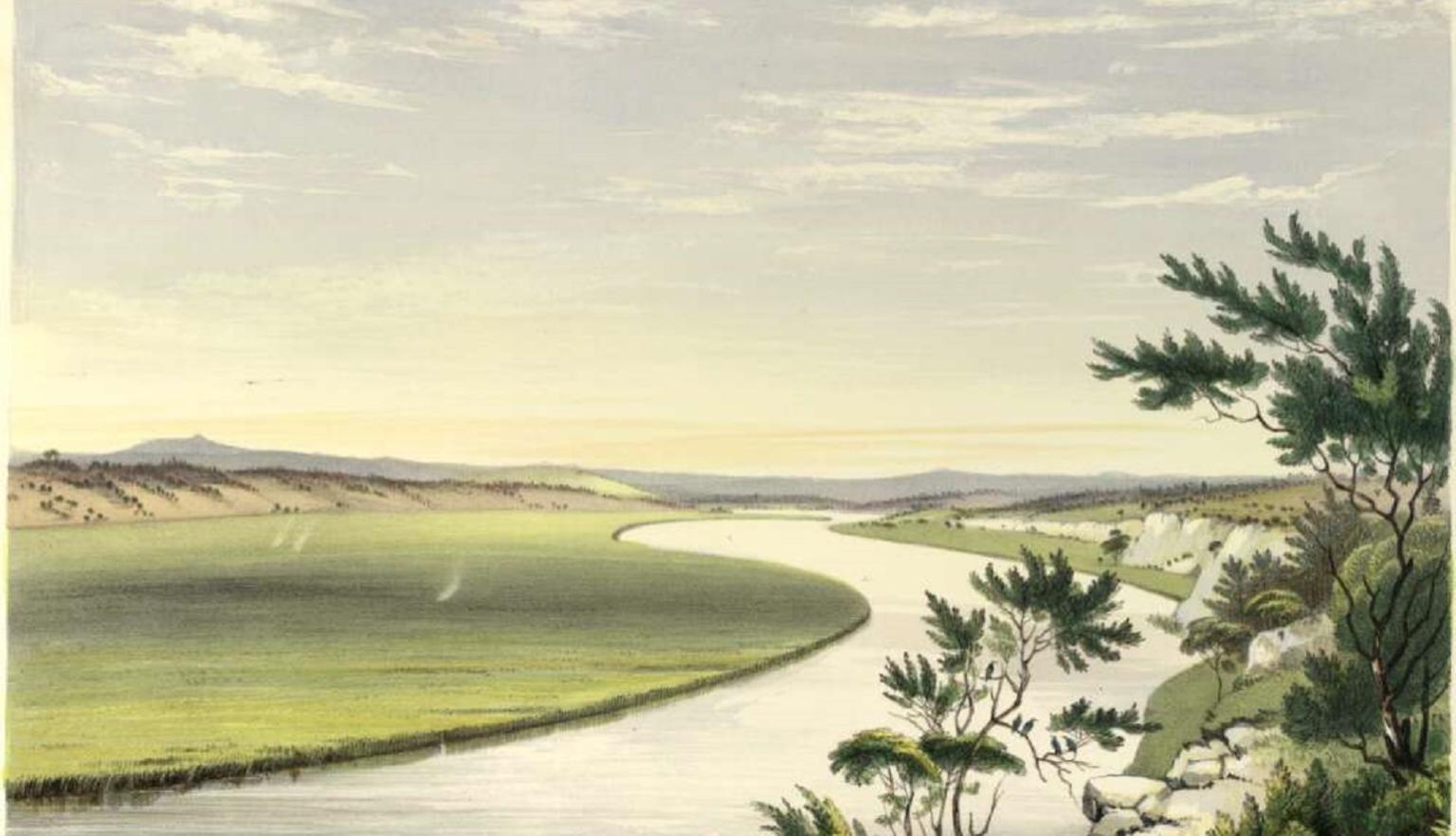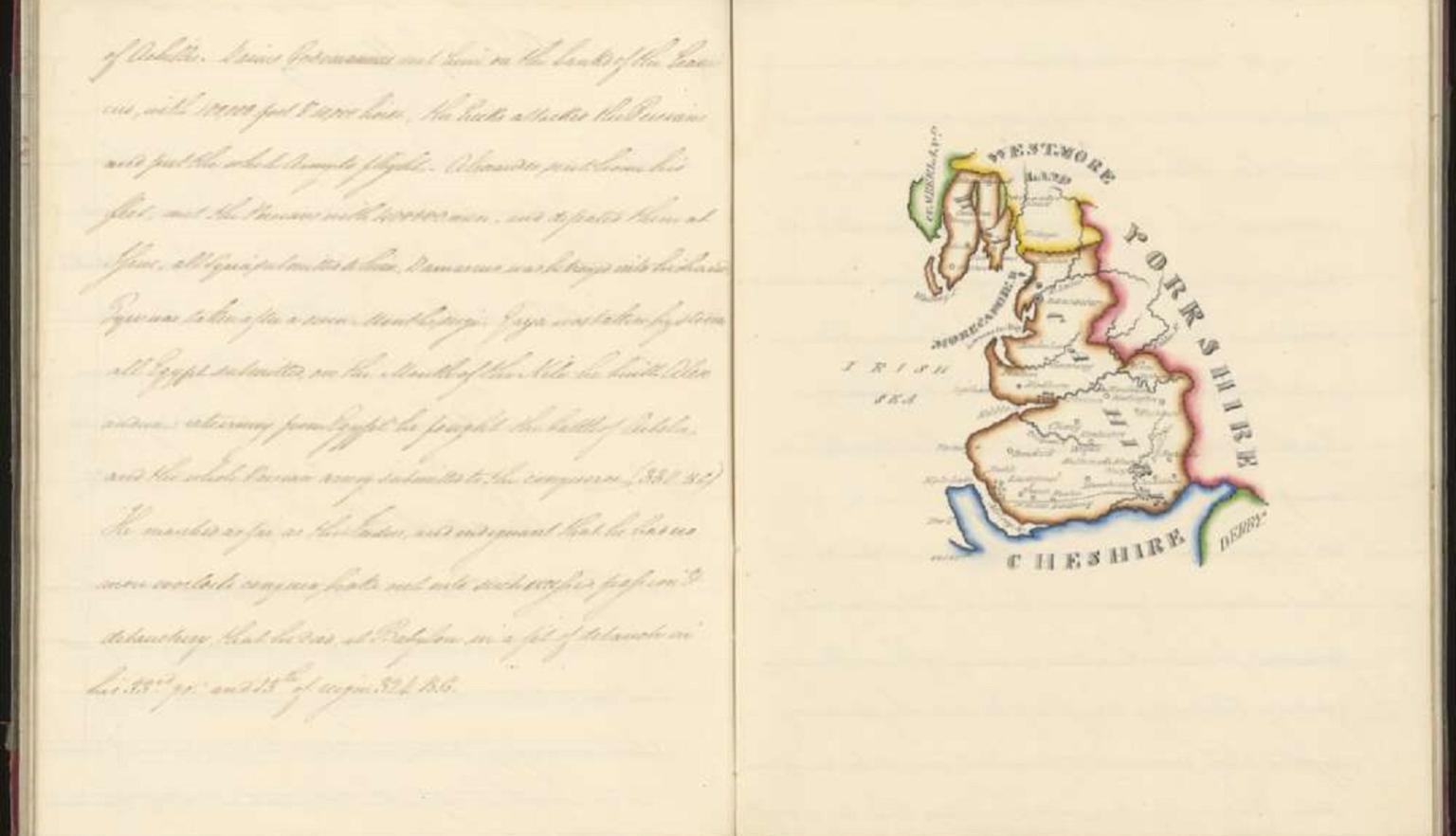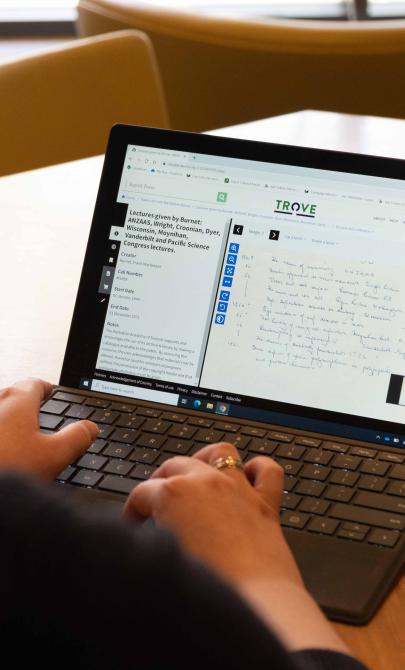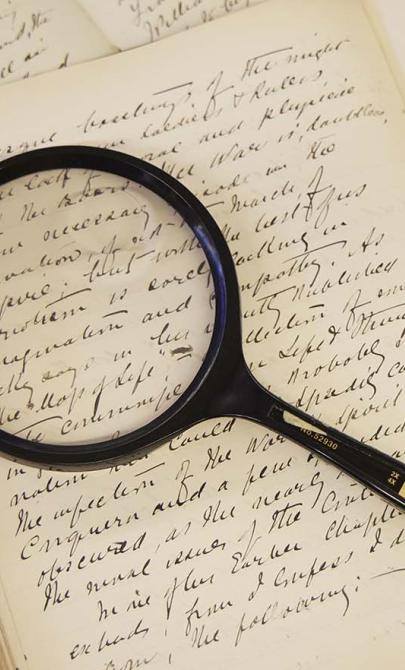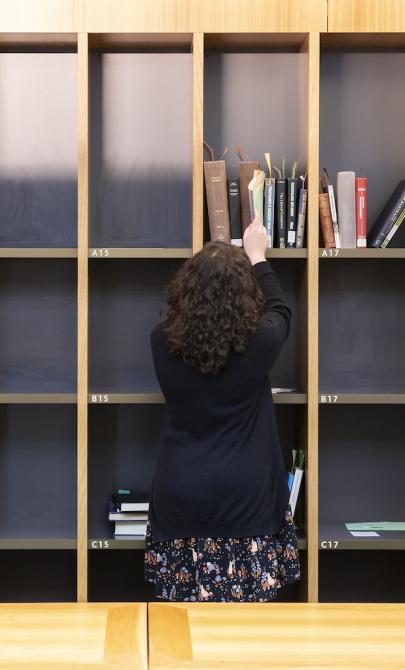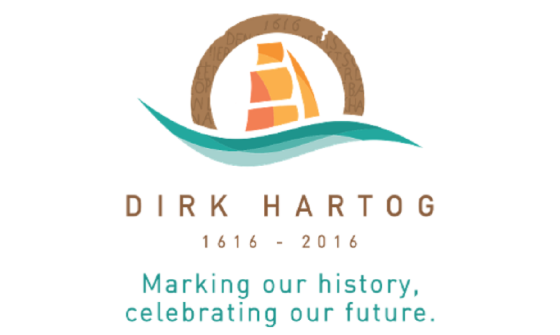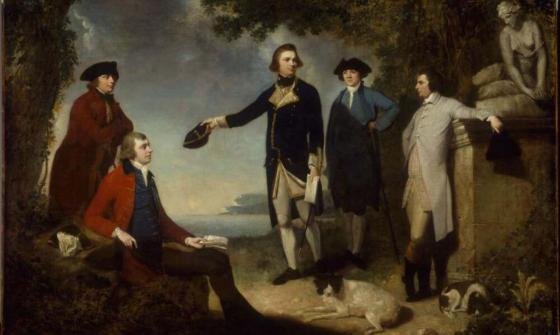Angas Collection
Collection highlights
Key items in the collection
This collection hosts a range of formats, including:
Papers of George French Angas, 1838-1877
We hold 3 fascinating commonplace books created by Angas during his school years. One is titled “The British Possessions and United States of North America” and includes his own drawings and hand-coloured maps of the United States and several English counties.
The other two, titled ‘The Victoria’ and ‘Tavistock’, feature a prospectus and a list of subscribers for a monthly publication that was planned for release in 1837.
You’ll also find manuscripts, along with pencil drawings, of articles Angas wrote for The Colonies and India journal in 1877. These articles include titles like ‘Down the Murray from its Sources to the Sea,’ ‘From Plymouth to Sydney,’ and ‘South Africa – Round about Cape Town.’
Our collection offers a unique glimpse into the life and travels of George French Angas through his incredible body of work. You’ll find 5 sketchbooks, 45 watercolours, and around 155 drawings done in various techniques, including pen and wash, pencil, and watercolours. These artworks span Angas’s early years to his later travels, offering a window into his world from the age of 12 all the way to 1877.
From Dawlish to the River Murray
The earliest piece in our collection is a view of Dawlish, England, created when Angas was just 12 years old (1835). His later works, such as a series of drawings of the River Murray, were produced for the journal Colonies and India in 1877.
Australian and New Zealand sketchbooks
Two of Angas’s sketchbooks feature drawings from his travels across Australia and New Zealand during 1844-45. These include stunning pencil studies of places like the Coorong and Lake Bonney in South Australia, as well as Port Nicholson, the Bay of Islands, and Maori life in New Zealand.
Among the 80 watercolours depicting Australian scenes, you’ll find images of:
- Sheep stations and landscapes from Morialta Falls to Rivoli Bay
- The South Australian wilderness, including Lake Albert and Kangaroo Island
- Iconic landmarks like the Bank of South Australia in Adelaide
His works also capture the hustle and history of New South Wales with pencil drawings from the Blue Mountains, Bathurst, and the Hunter River, to Sydney Harbour and the funeral of Sir Everard Home. One especially charming drawing is “The Young Cricketer.”
Later Australian works
His later drawings document central and northern Australia, produced for accounts of explorations by John McDouall Stuart (1864) and John Forrest (1875).
Travels beyond Australia
One of his sketchbooks holds 64 studies for The Kafirs Illustrated (1849), with around 40 works from Cape Colony and Natal in 1847, depicting Cape Town, Table Mountain, and Zulu life.
Explore Angas’s travels through Europe and Britain with drawings from:
- Malta and Sicily (1841)
- Constantinople and Scutari (1848)
- Jersey (1864)
- Ireland (1871)
- English churches and castles
Engravings, Lithographs, and more
Our collection also includes a large number of engravings and lithographs based on Angas’s original works. Some of these were printed by Angas himself and were featured in his books or illustrated newspapers. Highlights include the series Down the Murray from its Source to the Sea (1877) and a lithograph portrait of Angas by Charles Baugniet (1848).
Finally, we hold a bronze medal awarded to Angas at the Exposition Universelle de Paris in 1855, a testament to his lasting impact in both the art and exploration worlds.
In addition to the quarterly magazine The Inlander (1913-86), the Library holds many published reports, booklets and leaflets of the AIM. The following books deal with the lives of John Flynn and Fred McKay and the history of the AIM:
- Beth Beckett, Lipstick, swag and sweatrag: memoirs of a patrol padre’s wife: the Australian Inland Mission 1947-1955, 1998
- Elizabeth Burchill, Innamincka, 1960
- Margaret Ford, End of a beginning, 1963
- Arch Grant, Camel train and aeroplane: the story of Skipper Partridge, 1981
- Arch Grant, Palmerston to Darwin: 75 years service on the frontier, 1990
- William Gray, Days and nights in the bush, 1935
- Max Griffiths, The hungry heart, 1992
- Max Griffiths, The silent heart: Flynn of the Inland, 1993
- Max Griffiths, Straight from the heart: tales of tragedy and triumph from the nurses of the Australian outback, 2000
- Brigid Hains, The ice and the inland: Mawson, Flynn, and the myth of the frontier, 2002
- Mona Henry, From city to the sandhills of Birdsville, 1994
- Ion L Idriess, Flynn of the inland, 1932
- Rob Linn, Shifting sands to solid rock: ninety years of Frontier Services, 2002
- Fred McKay, Traeger: the pedal radio man: he gave a voice to the bush and to flying doctors, 1995
- Maisie McKenzie, Flynn’s last camp, 1985
- Maisie McKenzie, Fred McKay: successor to Flynn of the inland, 1990
- W Scott McPheat, John Flynn: apostle to the inland, 1963
- Michael Page, The Flying Doctor story, 1977
- RB Plowman, Camel pads, 1933
- RB Plowman, The man from Oodnadatta, 1933
About George French Angas
George French Angas (1822-1886) was born in Newcastle upon Tyne, England, and attended Tavistock Grammar School in Devon. His father, George Fife Angas, was a prominent merchant and banker, involved in the South Australian Colonisation Commission and the South Australian Company, and served on the South Australian Legislative Council.
From counting house to art
After a brief stint working in a London counting house, George French Angas pursued his passion for art. In 1841, a tour of the Mediterranean led to the creation of his first book of lithographs. Soon after, in 1843, he set sail for South Australia, where he immediately joined an exploration of the Murray River and the Coorong.
Travels and artistic achievements
Angas’s journeys took him far and wide. In 1845, he travelled to New Zealand and later held exhibitions in Adelaide and Sydney. He explored the Illawarra region before returning to England in 1846. During this period, he produced two stunning folios of hand-coloured lithographs: South Australia Illustrated and The New Zealanders Illustrated. He also published Savage Life and Scenes in Australia and New Zealand, a detailed account of his travels.
In 1848, Angas ventured to South Africa, where he created another notable folio, The Kafirs Illustrated.
Emigration to Australia and museum work
In 1850, Angas and his wife emigrated to South Australia, where his father had already settled. He opened an art studio in Adelaide and travelled to the goldfields near Bathurst, later publishing two volumes of lithographs of the New South Wales and Victorian goldfields in 1851. His career took a new turn in 1853 when he was appointed secretary of the Australian Museum in Sydney, where he developed a deep knowledge of conchology (the study of shells).
Later years and natural history focus
Angas returned to South Australia in 1860, where he served as chairman of the District Council of Angaston in the Barossa Valley. In 1863, he and his family moved back to England, where he remained for the rest of his life. His focus shifted from art to natural history, and he became an active member of both the Zoological Society and the Linnean Society in London.
Angas’s art was driven by a deep admiration for nature’s wild beauty. As noted by art historian Bernard Smith, Angas’s work holds value in three key areas: it serves as important ethnographic documentation, illustrates landscapes that promoted migration to new colonies, and includes many natural history drawings that remain valuable to scientists today.
Background to the collection
Both the Nan Kivell Collection, purchased in 1959, and the Ferguson Collection, purchased in 1970, included watercolours and drawings by George French Angas. Most of the original works by Angas in the Library’s collection, including manuscripts and five sketchbooks, were acquired from José Calvo of Viña del Mar, Chile, in 1973. Calvo’s wife Patricia was the great granddaughter of Angas.
The sketchbooks, paintings and drawings of Angas are held in the Pictures Collection (S6401-592, S7086-120 and T1-7). They have been catalogued individually and most of them have been digitised. The prints are also held in the Pictures Collection and about 200 of them have been individually catalogued.
The manuscripts are held in the Manuscripts Collection. They have been catalogued at the collection level. They are also available on microfilm (reel G 23042). The books are housed in the Australian Collection at various locations.
Major collections of paintings and drawings of Angas are held in the Art Gallery of South Australia, the Ballarat Fine Art Gallery, the Barr Smith Library (University of Adelaide), the La Trobe Library (State Library of Victoria), the Mitchell Library (State Library of New South Wales) and the Mortlock Library (State Library of South Australia)
This guide was prepared using these references:
- Alan McCulloch, Artists of the Australian gold rush, Melbourne, Lansdowne, 1977
- EJR Morgan, Angas, George French (1822-1886), Australian Dictionary of Biography Online
- Bernard Smith, European vision and the South Pacific 1768-1850; a study in the history of art and ideas, Oxford, Clarendon Press, 1960
- John Tregenza, George French Angas, artist, traveller and naturalist, 1822-1886, Adelaide, Art Gallery Board of South Australia, 1980
- Michael Vanstone, First impressions: the work of George French Angas, Adelaide Review, no. 12, April 1985, pp. 4-5
